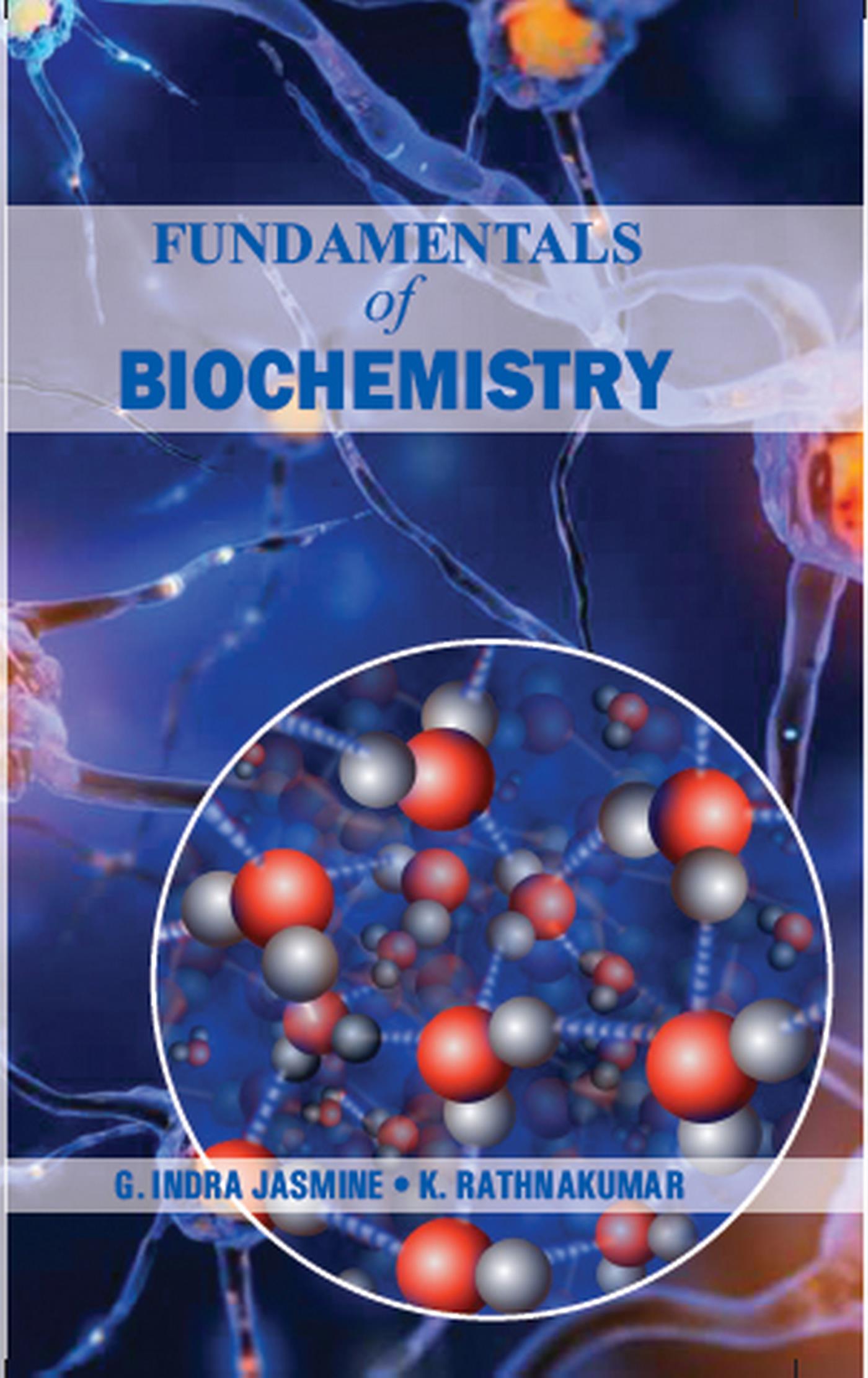Fundamentals Of Biochemistry
by G. INDRA JASMINE
2020-07-24 03:41:17
Fundamentals Of Biochemistry
by G. INDRA JASMINE
2020-07-24 03:41:17
This book on 'Fundamentals of Biochemistry'contains three parts. Part1 has 10 chapters each describing the structure and functions of different biochemical components. Part II includes 4 chapters that describe different metabolic reactions and Part I...
Read more
This book on 'Fundamentals of Biochemistry'contains three parts. Part1 has 10 chapters each describing the structure and functions of different biochemical components. Part II includes 4 chapters that describe different metabolic reactions and Part III list out some important analytical methods. Chapter1 lists the major molecules that make up food. The sources that supply these macromolecules are given. The important functions of each macromolecule are also described. Chapter2 provides the classification and function of carbohydrates present in plant and animal tissues. The structure of monosaccharaides, disaccharides, oligosaccharides and polysaccharides are described.The important reactions of carbohydrates are also described to give a basic knowledge so as to understand the methods used for their qualitative and quantitative estimations. Chapter3 gives detailed account of the amino acids, the monomers of protein, their classification, structure and functions. The important physical and chemical properties and reactions are also described. The principle behind their important reactions and their application for the qualitative and quantitative estimations are also given. Chapter 4 describes the classification and functions of proteins. The structural organization and the forces that stabilize these structures are also given. The properties and important reactions of proteins are also described. In chapter5 the classification and structure of lipids are described to enable the student to understand the heterogeneous nature of compounds of lipids and fatty acids that occur in plant and animal tissues. The properties and reactions of lipids are also given. Further the digestion, absorption and metabolism for providing energy are also described. Chapter 6 gives an account of the structure and functions of nucleic acids present in cells. The phenomenon of replication and recombinant DNA synthesis arealso described. Further, the processes involved in the transcriptionand translation of RNA are also described. Chapter 7 describes the classification and functional organization of enzymes, the biocatalysts, present in cells and tissues of plant and animal. Further the mechanisms by which these enzymes functions and their inhibition by different compounds are also described. Chapter 8 describes the classification and functions of hormones present if various tissues and organs of animals. The mechanisms that are involved in the functioning of different hormones are also described. Chapter 9 and 10 describe the structure and biological functions of water soluble and lipid soluble vitamins. The requirement and sources for the supply of these vitamins are also given. The effect of deficiency of these vitamin intake and the effects due to excess intake are alsodescribed.. Part II consists of four chapters. They describe the details of digestion, absorption of carbohydrate, protein and lipids and energy production. The catabolic and anabolic reactions involving the above components and the processes of energy production and their utilization are also described Part III lists out the principles and apparatus used for the for the qualitative and quantitative estimation of major biochemical compounds like Method of total Lipid Extraction from Fresh and Frozen Fish, Estimation of Glycogen with Anthrone Reagent , Estimation of Total Nitrogen and Protein Content of Fish by Micro Kjeldahl Method, Estimation of Protein by Lowry's Method, Determination of Saponification Number of Fish Fat / Oil , Determination of Iodine Value of Fish Oil, Estimation of Lipase Activity, Determination of Molecular Weight of Proteins by Gel Electrophoresis (SDS - PAGE), Separation of Lipid of Fish Samples Using thin Layer Chromatography, Paper Chromatography of Amino Acids. The book provides a comprehensive account on fundamentals of Biochemistry. The book will be useful for fishery professionals, students, scientists and college teachers as a useful reference material in general and impart significant knowledge on Fundamentals of fish Biochemistry to the student community in specific.
Less































